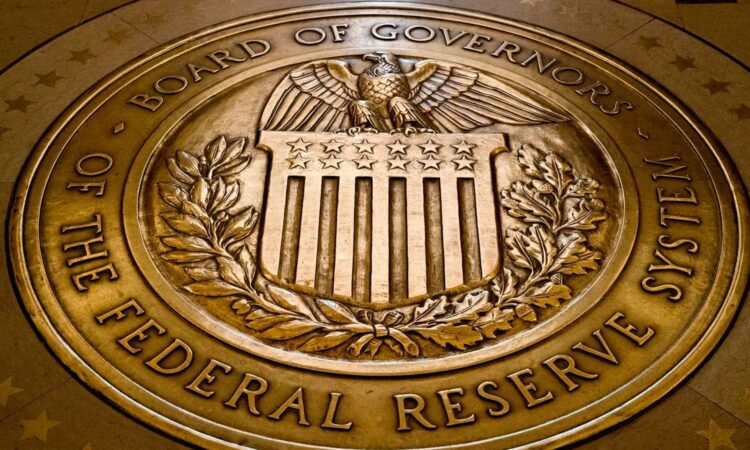
Topline
Some 21.8% of U.S. loan applications over the last month were denied—the highest rejection rate since June 2018—according to new data from the Federal Reserve, which might suggest higher interest rates and fears from recent bank failures are making it harder for Americans to borrow for everything from cars to houses.
The seal of the Board of Governors of the United States Federal Reserve System is displayed in the … [+]
Key Facts
Four months ago, the last time this data was reported, the rejection rate was 17.3%.
The increase in rejected loan applications was seen widely across age groups, but was seen most acutely among those with credit scores below 680, the Federal Reserve said.
The rejection rate for auto loans over the previous 12 months was 14.2%, up from 9.1% in February and an all-time high since the Fed began tracking this data in 2013.
For credit cards, the rejection rate was 21.5%, and for credit card limit increase requests, it was 30.7%.
The rejection rate for mortgages was 13.2%, and 20.8% for mortgage refinancing applications.
The Federal Reserve survey also found that nearly 46.1% of those who applied for mortgages expected their loan to be denied, showing a lack of confidence.
Additionally, 30.7% of auto loan applicants expected their loans to be denied as well as 32.8 percent of credit card applicants, 42.4 percent of credit limit increase applicants and 29.6 percent of mortgage refinance applicants.
Tangent
Since the Federal Reserve began tracking this data, the rejection rate has peaked at 24.2% in October 2014, and the lowest it’s been was 13.8% in June 2014. In February 2020, immediately before the Covid-19 pandemic was declared, it was 14.2%.
Key Background
This is the first batch of loan rejection data that’s been released since Silicon Valley Bank collapsed in March, which was quickly followed by two other regional bank failures—Signature Bank and First Republic—and sparked concerns about a potential wider banking crisis. In the first three months of this year, which lined up with the SVB collapse, more than 40% of loan officers told the Fed they were tightening standards for commercial loans to smaller borrowers and large firms alike. This data also comes after the Federal Reserve hiked interest rates to combat inflation, a strategy that is likely curbing lending. The Federal Reserve raised interest rates 10 consecutive times starting in March 2022. However, these rate hikes may slow down or end altogether soon: In June, as inflation slowed, the Federal Reserve decided not to raise interest rates for the first time since it began its anti-inflationary measures, though Fed officials signaled they are open to more rate increases in the future.
Big Number
4.5%. That’s how much the rejection rate for U.S. loans increased in the past four months.
Further Reading
Fed Pauses Interest Rate Hikes For First Time In Over A Year—But Signals More May Still Come (Forbes)
Mortgage Rates Hit Highest Level Since 2008 In Latest Bleak Sign For Housing Market (Forbes)
Stocks Rally Even After Powell Reiterates That Fed Will Keep Raising Rates (Forbes)






